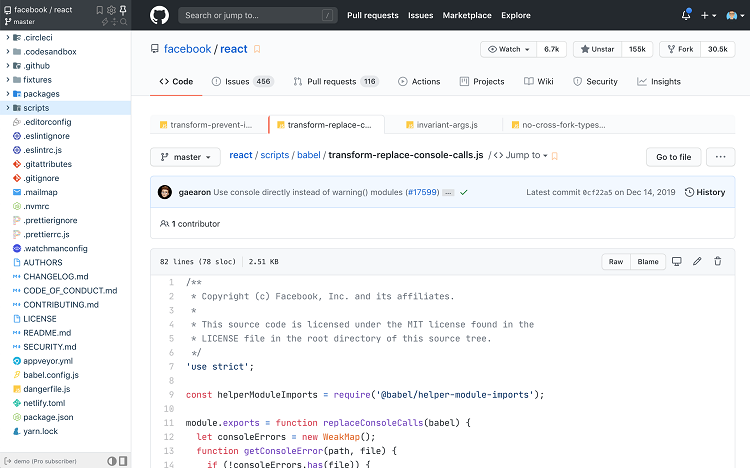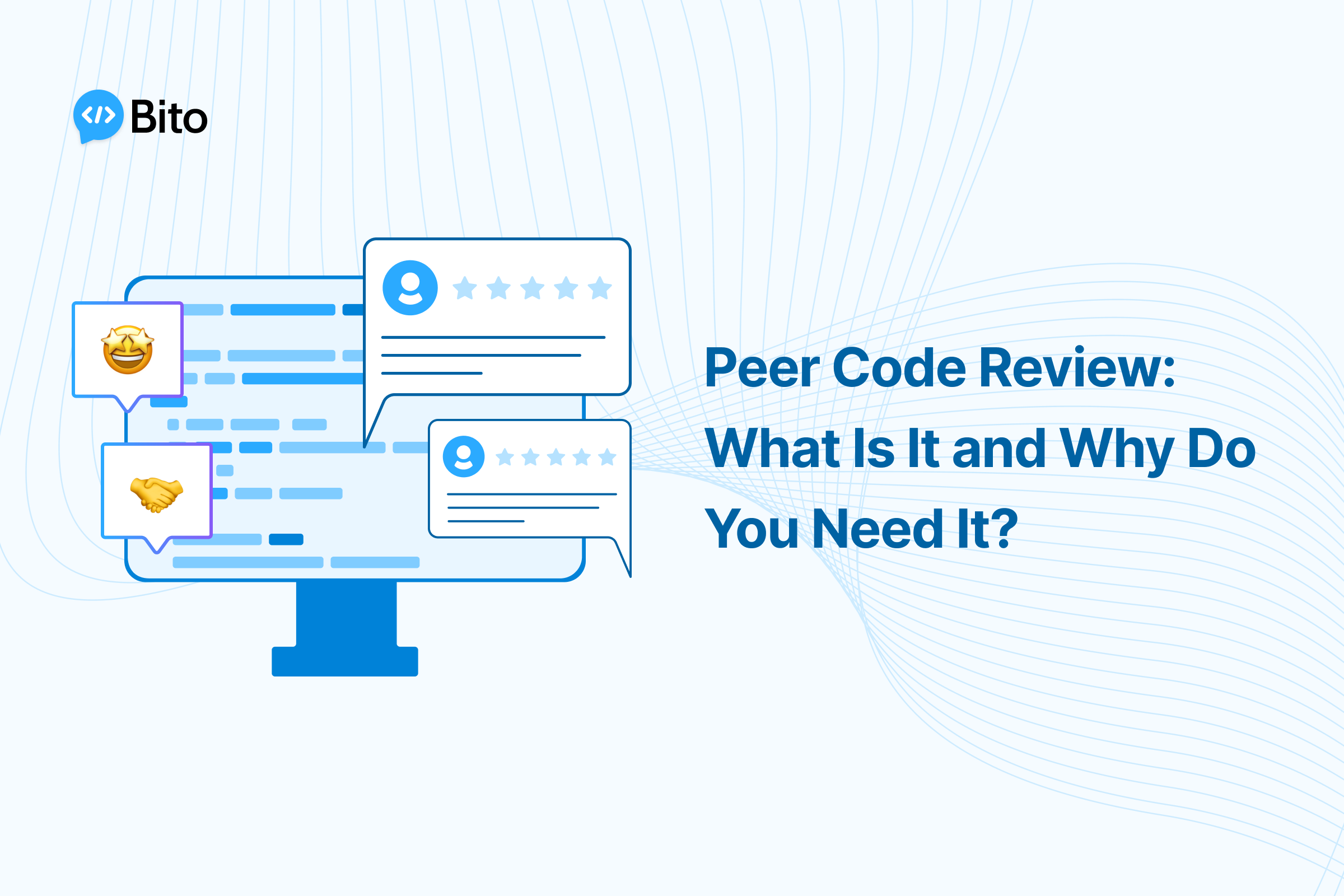Peer code review, also known as peer review, is a formal software engineering practice whereby one or more developers examine source code written by a peer. Through an exhaustive inspection of the code line-by-line, reviewers provide feedback to authors on any bugs, security vulnerabilities, style violations, or opportunities for general improvements. The goal is to ensure the highest quality code makes it into the codebase and catch any defects early while they are still cheap to fix. But what exactly is peer code review, why is it so important for software teams, and how can organizations implement an optimal review process? Let’s explore.
What Is Peer Code Review?
Peer code review refers to the practice of software developers thoroughly examining each other’s source code before it gets merged into the main codebase. Unlike personal code reviews developers conduct on their own changes, peer reviews involve sending code to fellow programmers for them to critique.
Here are some key characteristics of peer code reviews:
- Formal and documented process – Peer reviews follow a standardized procedure with tangible inputs and outputs. Reviewers are assigned, defects are logged, and approvals are required.
- Line-by-line inspection– Reviewers go through code line-by-line looking for bugs, vulnerabilities, style issues, etc. This level of scrutiny uncovers subtle problems.
- Feedback to authors– Reviewers provide comments and action items directly in the code for authors to address. This collaborative process improves code quality.
- Approvals required– Once issues are resolved, reviewers formally approve the changes before they get merged into the main branch. No code gets committed without approval.
- Iterative changes – If additional issues are identified, authors revise their code and return to reviewers for another inspection. This cycle repeats until all reviewers’ concerns are addressed.
While informal peer feedback can be useful, code reviews gain the most benefit when following this formal and regimented process. When executed correctly, they substantially improve software quality and reduce defects.
Why Is Peer Review Important?
Peer code review provides several key benefits that demonstrate why it is a critical practice for software teams:
Finds Defects Early
Peer reviews uncover bugs and security flaws while code is still being written rather than after it hits production. The earlier defects get identified, the cheaper and faster they are to resolve. Fixing bugs that make it to customers can be 30 to 100 times more expensive
By preventing defects from ever reaching users, peer review provides tremendous cost savings.
Develops Junior Developers
Peer review enables less experienced programmers to learn from their more senior colleagues. When starting out, developers gain exposure to many techniques, idioms, and corner cases by reading through seasoned developers’ code.
The feedback process also trains juniors on company coding standards and best practices. The iterative cycle of reviews teaches them how to write better code.
Promotes Knowledge Sharing
Peer reviews encourage collaboration and sharing of information across the team. Programmers gain insights into modules and systems they don’t normally work on.
Discussing alternate solutions also expands developers’ thinking. Teammates can explain their reasoning behind certain design decisions as well.
Enforces Coding Standards
Without peer reviews, developers may drift from company coding standards over time. Peer review re-aligns code with standard style guides and best practices.
Having formatted code also makes it easier for developers to understand each other’s changes. Consistent style and patterns improve maintainability.
Improves Processes
Peer reviews provide data to refine and optimize development processes. Managers can identify recurring issues from reviews to improve coding practices.
Review effectiveness metrics also give insights into bottlenecks like slow review turnaround times. This data enables continuous improvement.
How To Implement Peer Code Review
To implement an effective peer review process, software teams should follow these key best practices:
Keep Changes Small
Research shows reviewers should inspect no more than 200-400 lines of code (LOC) at a time. Beyond this size, a reviewer’s ability to properly check code diminishes. Smaller code changes are easier to thoroughly analyze.
// Good - short function of ~10 LOC
function calculateTotal(cart) {
let total = 0;
for (let item of cart) {
total += item.price;
}
return total;
}
// Avoid - long function of ~100 LOC
function processOrder(order) {
let total = 0;
const taxRate = 0.05;
for (let i = 0; i < order.items.length; i++) {
let item = order.items[i];
// Price calculations
if (item.discount) {
// Apply discount
} else if (item.promoCode) {
// Apply promo
} else {
// Regular price
}
total += item.price;
}
// Total calculations
if (order.type === "retail") {
total *= (1 + taxRate);
} else {
// Other order types
}
// Shipping calculations
if (order.shipMethod === "express") {
total += 9.99;
} else {
// Other shipping
}
return total;
}
Keeping peer reviews focused on smaller chunks enables more thorough analysis.
Inspect Less Than 500 LOC Per Hour
Research also found review rates should stay under 500 LOC per hour. Attempting to review code faster results in missing bugs and lower quality inspection.
Reviewers should spend enough time to deeply analyze the code rather than skimming through it quickly. If the team requires higher throughput, conduct more peer reviews in parallel.
Timebox Reviews to 60 Minutes
Human focus and performance degrades after an hour of concentrated mental effort. Limit peer review sessions to 60 minutes to maintain high attention levels.
Breaking reviews across multiple sittings also lets information soak in subconsciously between sessions. This results in higher defect detection rates.
Use Checklists and Metrics
Code Review Checklist ensures reviewers look for common issues and don’t rely solely on memory. They also provide consistency across reviews.
Metrics enable teams to track review effectiveness, identify bottlenecks, and optimize the process. Capture metrics like defects found, review duration, approval cycle time, and more.
Enable Lightweight Tool-Assisted Workflow
Research found lightweight, tool-assisted peer reviews are most efficient and effective. Informal processes or heavyweight reviews with extensive documentation and process overhead tend to have lower quality.
Using a purpose-built automated code review tool provides automation for routing code changes, capturing comments, and collecting metrics. This removes manual work so reviewers can focus on analysis.

A lightweight, collaborative code review tool optimizes results.
Conclusion
Peer code review is one of the most impactful practices organizations can adopt to reduce software defects and improve quality. By thoroughly inspecting source code in a structured, collaborative process, teams find bugs early, share knowledge, and boost skills.
However, not all review processes yield equal results. Following proven best practices around keeping changes small, limiting review duration, leveraging checklists, and enabling lightweight workflows produces the highest review effectiveness.
Building these practices into your team’s software development lifecycle provides both technical and cultural benefits for your organization. Developers produce better code, managers gain insights to refine processes, and team members develop strong working relationships.
While peer reviews require an upfront time investment, they pay huge dividends in cost savings from finding defects before software ships. Given the significant quality and productivity boost peer code reviews provide, they are one of the most impactful process improvements a software team can make.






